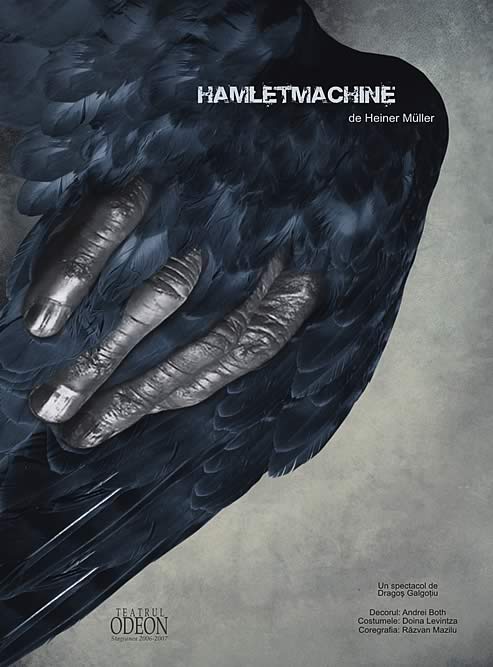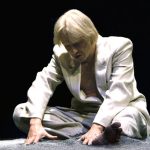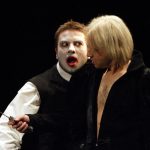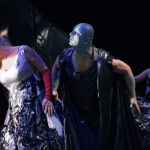by Heiner Muler, directed by Dragoș Galgoțiu
Hamlet: Marius Stănescu
Gertrude: Oana Ștefănescu
Ophelia: Antoaneta Zaharia
Polonius: Ionel Mihăilescu
Horatio: Traian Vlaș
Claudius: Gelu Niţu
Laertes: Ionuţ Kivu
the king’s staff: Tiberiu Almosnino
Osric: Mugur Arvunescu
Rosenkrantz: Gabriel Pintilei
Guildenstern: Paula Niculiţă
Sexton: Marian Ghenea
Sexton: Laurenţiu Lazăr
Witnesses: Bogdan Alexandru, Claudiu Buldan, Marius Andrei Dobrin, Răzvan Pop
Musicians: Young Brass Quintet: Marius Hoghi, Paul Aniculăesei, Cristian Costache, Bogdan Octavian, Marius Suciu
A performance by: Dragoş Galgoţiu
Stage design: Andrei Both
Costumes: Doina Levintza
Choreography: Răzvan Mazilu
Translated by: Adriana Popescu
International Theatre Festival, Sibiu, May 30, 2009
Shakespeare International Festival, Gdansk (Poland), August 5 and 6, 2008
The Contemporary Drama Festival, Brașov, November 16, 2007
The National Theatre Festival, Bucharest, November 6, 2007
RAZVAN MAZILU – Jury`s Award for choreography, National Contemprorary Drama Festival, Brașov, 2007
ANDREI BOTH and DOINA LEVINTZA – Award for best stage design, National Contemprorary Drama Festival, Brașov, 2007
MARIUS STANESCU – UNITER Award for best actor in a leading role, 2007
Photos by Mihaela Marin
Press reviews
Vision that Dragos Galgotiu has had plenty of. Using the text (which he kept almost in its integrality), he built up a jewel-like expressionist performance, loaded with images of a stirring plasticity of the construction, the gesture and body language, a number of refined scenes in which the actors evolve – they do not play but evolve – in an opulent stage design, in a shadowy light, in rich costumes, on an eclectic musical background, from Bach to café – concert songs from the 30s’ and circus music.
Galgotiu’s great success is to have constructed a clear performance that expresses the text’s ideas throughout the theatrical language, mainly by gestures and images supported by music and lights (both signed by Dragos Galgotiu) and only secondarily by words. Andrei Both’s stage design plays a very important part also. The castle’s wall consisting of irregular stone plates guards the stage and in the left side it prolongs frayed into the background. The scenes are delimited by a bell knell that oscillates sinister in front of the stage.
Stage design, costumes, lights, even the make-up, all have shades of corpse-like green, sometimes red and rarely blue, in this performance in which death is ubiquitous.A deep melancholy, a bitter and accepted loneliness, brought about by the lucid contemplation of history, fragility, helplessness, torment and repulsion. This is what Marius Stanescu’s character expresses. The actor undergoes with elegance from the fine irony to the violent turmoil and then to resignation towards the end. Marius Stanescu has huge talent, visible also during the long soliloquy that he tells flawlessly, with an enviously diction and an intelligent, cultivated phrase, as, unfortunately, we hear less and less on our stages!
What a joy that we can still enjoy that in Bucharest. Indeed, it is not for everyone. But it is Poetry and Theatre. And it definetly is a performance that one must see. And awarded.
















